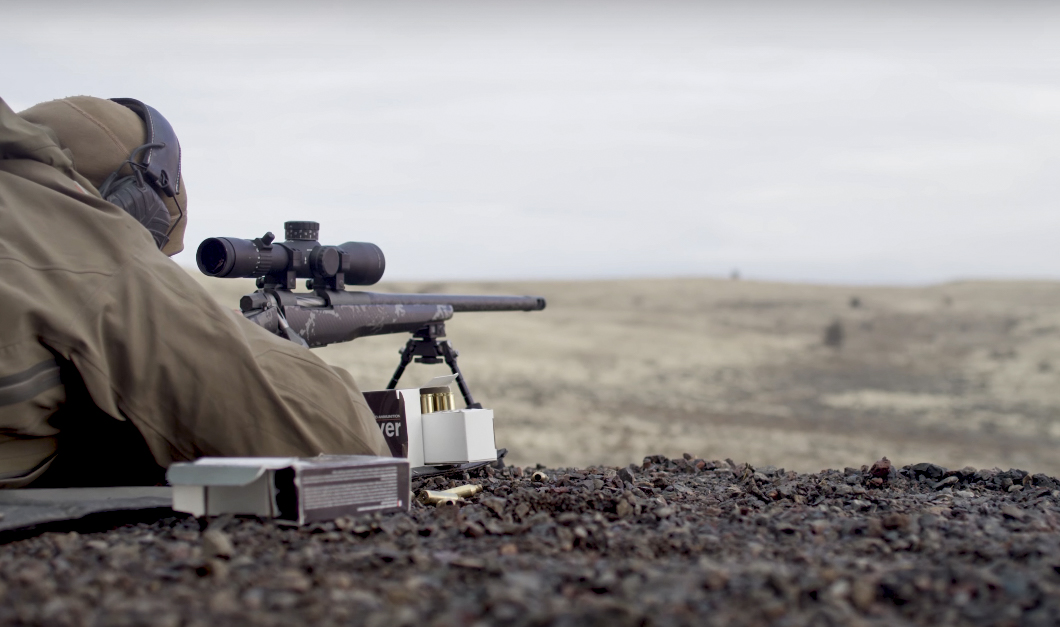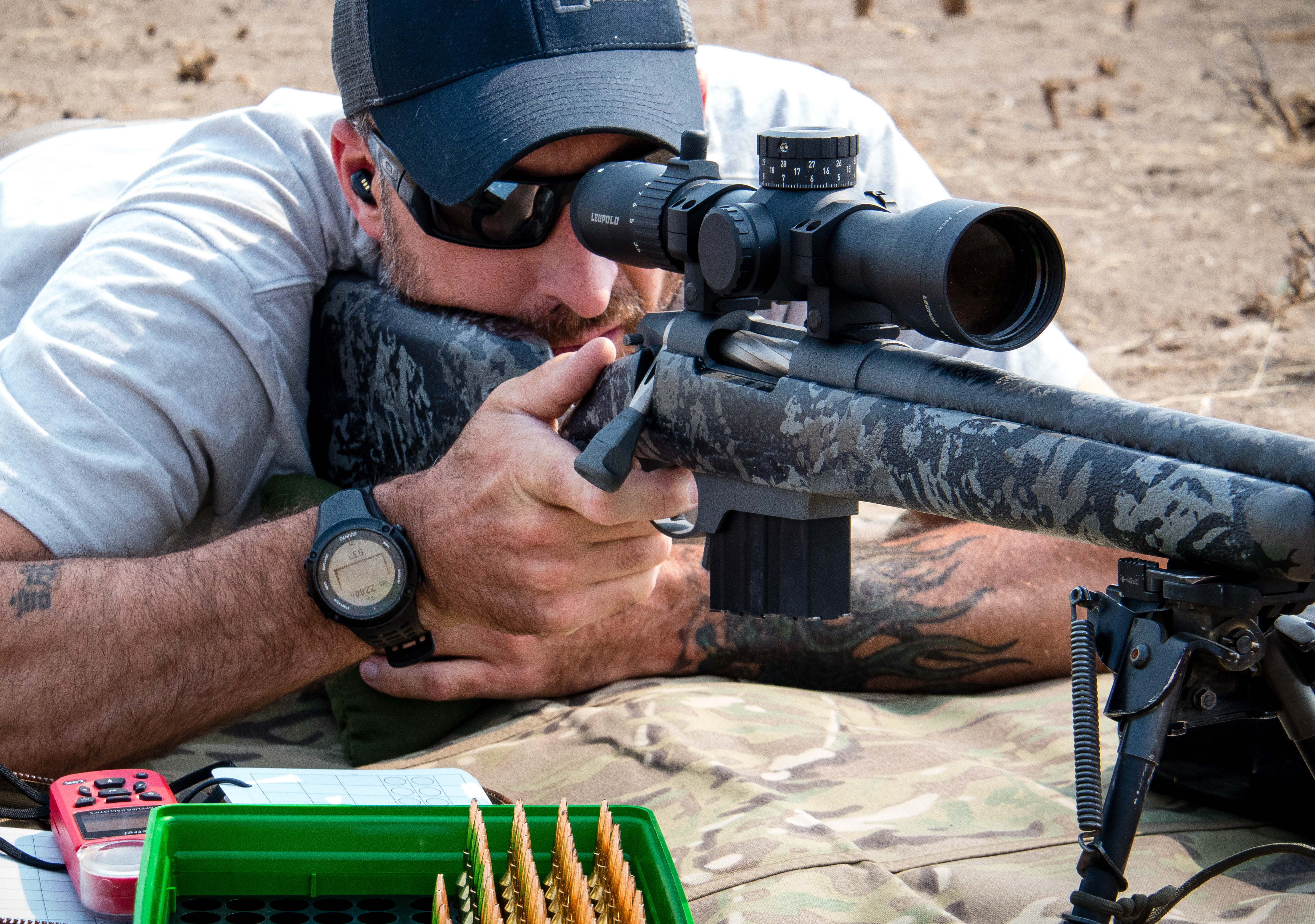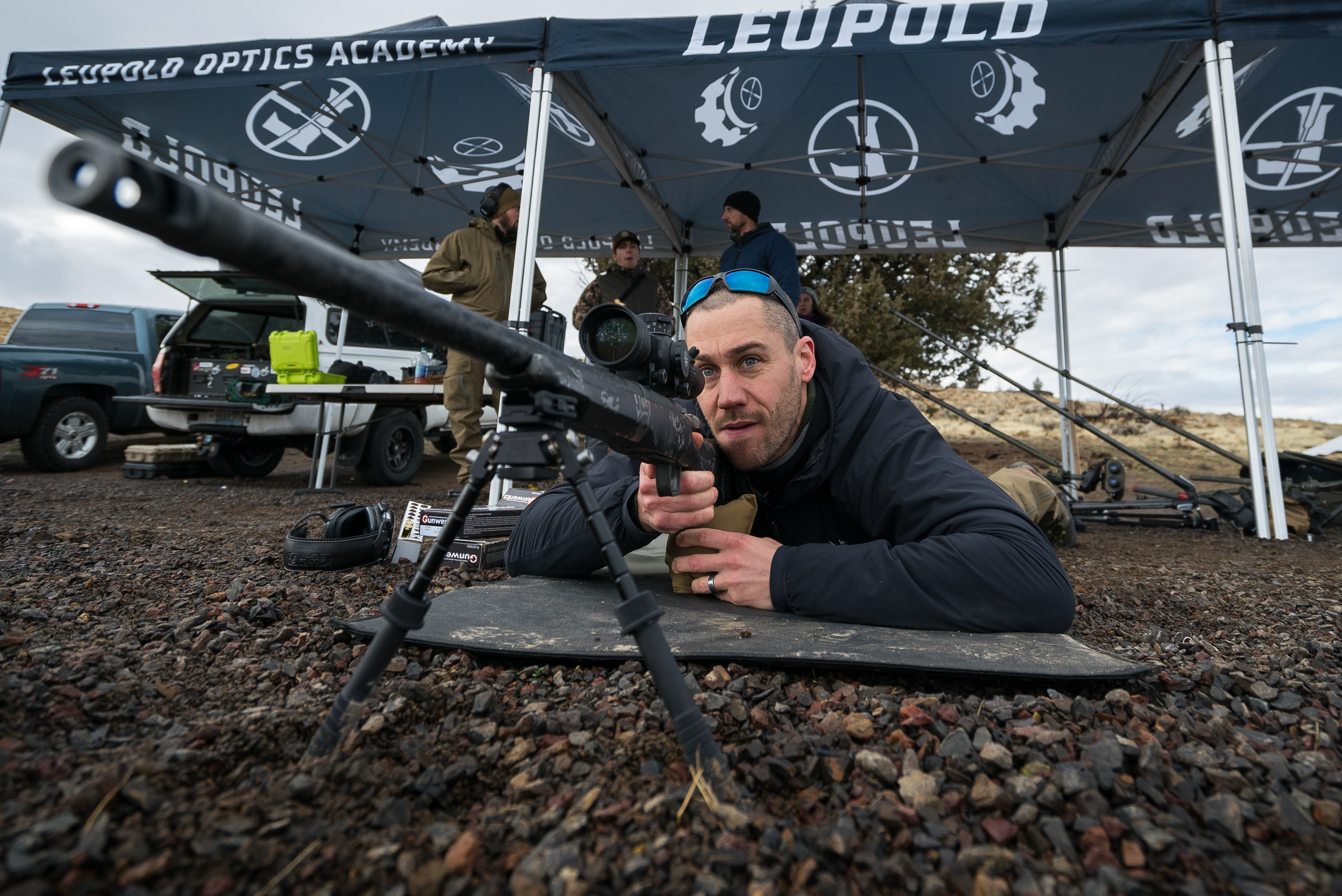If you’re reading this, you’ve likely experienced or heard about an all-too-familiar scenario. You’ve waited for this moment all season long. A big buck you’ve been filming, tracking and hunting suddenly appears just thirty yards ahead. Your heart rate rises. Your adrenaline surges. Your breath quickens. Every sense in your body goes on high alert as you see the antlers swinging and hear the twigs snapping.
Boom. He’s broadside. Easy shot. You raise your bow and draw, wait just a few seconds, activate your release or pull your trigger…and at the same time flinch like a flopping fish and feel your heart sink as you watch your arrow sail right over the buck’s back. And just like that, he’s gone, along with your hundreds of hours of shooting practice, bow tuning, equipment purchases, scouting, gas and time. Bummer.
Sound familiar? That’s right: buck fever – also officially known as “target panic” in a hunting scenario – has afflicted just about every hunter at some point in their life.
What Is Target Panic?
So what exactly is the target panic that rears its ugly head during the buck fever scenario above, or your local 3D shoot, or target practice, or any other scenario where you seem to briefly “lose control”?
In most situations, the issue happens just after the pin on your sight floats across your target. Normally you’d hold steady, smoothly squeeze the trigger on your aid and send your arrow into the vitals or bull’s eye, but instead you freeze, experience a moment of nervous panic, helplessly witness your pin rove all over the target, lose conscious movement control, and often flinch and take a very poor shot.
Now allow me to be clear: I am not an archery coach, nor do I profess to be a total bowhunting expert. Others far more qualified than I in the mechanics of target panic and the psychology of target panic have quite thoroughly addressed the target panic issue. For example, my friend Joel Turner, the founder of ShotIQ.com (an online class that can help archers beat target panic) explains that from a psychological standpoint, it is the body’s natural response to anticipating the shot, and “bracing” or tightening the body in the process. To fix this issue, many archers use a release aid such as a hinge or back-tension release that keeps them from punching the trigger and instead fires when you rotate the release to a preset point. World champion archer Levi Morgan recommends to spend at least two weeks practicing drawing and holding steady on your target without ever releasing an arrow, because this can potentially break the habit of the shot anticipation that causes target panic. Other coaches recommend blind or blank bale shooting at a large, general target, like a bale of hay (usually with the eyes closed) instead of aiming at a specific small bull’s eye. This allows you to focus on the steps of shooting and form, such as stance and back tension, rather than anticipating your shot.
These are all great tips, and, again, excellently address the mechanism and psychology of target panic. But as an exercise physiologist and sports scientist, what I can comment intelligently upon is the physiology and underlying biological mechanisms behind target panic, and that’s exactly what I’m going to address in this article, along with helpful tips that will allow you to solve this problem once and for all.
So let’s begin. From a physiological component, there are four main areas you need to address: the nervous system (HRV), the brain waves (neurofeedback and meditation), the breath, and overall cortisol levels (medications and supplements). Below, I’ll give you my five most potent tips for managing each of these variables.
1. HRV Training
HRV stands for Heart Rate Variability. Researchers and exercise physiologists have been tracking and utilizing HRV for decades because it’s a useful indicator of several health-related issues, but only lately has HRV come to the attention of professional athletes, coaches, biohackers and even the general public.
Here’s how HRV works: a healthy heart beat contains mild irregularities. Even if your heart rate is, say, 60 beats per minute, that doesn’t mean that your heart beats exactly once every second, or at one-second intervals (like a clock). Instead, there is slight variation in the time intervals between your heartbeats. For example, the interval between one set of heartbeats can be 0.95 seconds but the interval between the next set of heartbeats might be 1.15 seconds. 1.35 seconds between some other two.
Even though the time interval is measured in milliseconds, you can actually feel this difference if you pay attention. As you’re reading, go ahead and put a finger gently on the side of your neck or back of your wrist and find your pulse. You should feel that the longest intervals take place when you exhale, and the shortest intervals take place when you inhale.
If the intervals between your heartbeats are relatively constant, your HRV is considered low. If their length varies slightly from beat-to-beat, your HRV is high. Why is this important? Because your HRV is a perfect indicator of your nervous system health and overall stress (including your propensity for target panic). One branch of your nervous system – your autonomic nervous system – regulates very important systems in your body, including heart rate, respiration rate and digestion. This autonomic nervous system has both a parasympathetic (“rest-and-digest”) branch and a sympathetic (“fight-and-flight”) branch. A high HRV with a slight variability in the time intervals between each heartbeat is a very reliable indicator that both branches are functioning in perfect unison.
So if you can somehow measure your HRV, then train your HRV to be consistently high, you can gain instant, conscious control over your nervous system and stress. Pretty cool, eh?
How is this done? These days, it’s actually quite simple. Devices such as the Oura ring can track your HRV during an entire night of sleep and give you feedback about your general level of stress each day, while realtime HRV feedback apps such as the NatureBeat can actually use breathing and stress control training to teach you how to lower your HRV in as little as three seconds. By getting to know what activities, foods, supplements, breathing tactics, and state-of-mind affect HRV, you gain a very valuable skill: the ability to control your nervous system. This is a skill you can easily use while shooting or hunting. Want to learn more about HRV? Here are a few articles and podcasts I’ve produced on the topic:
-Podcast: How To Lower High Cortisol, The Groundbreaking High-Fat Endurance Study, What Causes Low HRV & More!
-Podcast: Could This New Ring Be The Final Frontier In Self Quantification, Biohacking, Sleep Tracking, HRV, Respiration & More?
-Podcast: A Deep Dive Into HRV: The Myths & Truths of Heart Rate Variability Testing
-Podcast: What Is The Best Way To Track Your Heart Rate Variability (HRV)
-Article: HRV: The Single, Next Big Trend In Biohacking And Self-Quantification And How To Use It
2. Neurofeedback
Focus and emotional balance is the key to peak performance in all areas. Neurofeedback – also known as EEG biofeedback – is used by many athletes, including the recently competing USA Olympic athletes, to train their brains to function better during performance states. EEG was originally used to treat conditions such as epilepsy, attention deficit disorder and migraines, but contrary to popular belief, can benefit all brains.
Neurofeedback trains your brain to function more efficiently, improving mental functioning and emotional regulation. Much like physical training, you can use brainwave training to strengthen specific brainwave (EEG) patterns. The more you practice you have activating or entraining a specific area of the brain, the stronger and more accessible those resources become.
Neurofeedback was discovered in the late 1960s by sleep researcher Barry Sterman, PhD, who discovered that he was able to train cats to produce more of a specific EEG pattern by reinforcing it with a positive reward. This specific rhythm, in a frequency of 12Hz to 15Hz, over the sensorimotor part of the brain’s cortex is called “SMR”, or sensory motor rhythm, and is primarily comprised of alpha brain waves with a slight touch of alert beta brain waves thrown in. If you’ve ever seen a cat lying on a window sill looking out the window at birds, you have seen SMR. Body like liquid, but eyes in a laser-like calm focus. That’s the SMR state – a feline version of “the zone,” if you will.
Our bodies follow the brain every step (and misstep of the way). Athletic performance is truly a function of brain-body connection. With so much at stake, it’s almost a no-brainer for an Olympic athlete to hone their mental game in addition to their rigorous physical training. Many athletes have realized that neurofeedback is one of the best ways to keep their mind controlled and focused so their body can perform at its best.
The Italian National Soccer team kicked up their performance by using neurofeedback and won the 2006 World Cup after edging France with clutch penalty kicks. Olympic Beach Volleyball champion Kerri Walsh-Jennings has incorporated neurofeedback into her training routine for years. Alexandre Bilodeau, the Canadian men’s mogul champion credited his gold medal to neurofeedback. Bilodeau used it to stay relaxed between runs.
Elite athletes across the world incorporate neurofeedback into their training – from the United States Olympic Training Center, US Special Forces and Navy Seals, NFL, NHL, the Pro golf circuit, Formula 1, and even NASA.
These athletes use neurofeedback training to increase focus and attention, improve the depth and quality of sleep, increase neuroplasticity (which may help the central nervous system better cope with stress), and increase confidence in stressful scenarios. In a nutshell, these folks use neurofeedback to overcome their personal kryptonite, whatever that may be, and it can work perfectly for a scenario such as target panic too. You can think of neurofeedback as a way to train your brain how to instantly get into a hyper-focused zone-like state of highly focused alpha brain wave production.
In 2017, I visited the Peak Brain Institute in Los Angeles, California for a special type of advanced brain scan and brain mapping system called a quantified electroencephalography, or “QEEG”, and embarked upon my own neurofeedback journey that permanently rewired my brain (in a good way!). You can learn more about that, and how to get started into neurofeedback yourself, in the podcast “How To Rewire Your Brain For Better Sleep, Reset Your Brain’s Tolerance To Marijuana & Alcohol, Fly Spaceships With Your Mind & Much More“.
3. Breathwork
A multitude of research has repeatedly proven a link between stress and breath, and scientists have figured out that you can actually relax your brain through your breath and that you can also speed up stress reactions and cortisol release via hyperventilation. This all has to do with your brain’s “respiratory pacemaker” for breath – comprised of a cluster of neurons in the brainstem that affect breathing, emotional states, and alertness.
Harvard researcher Herbert Benson even coined the term “The Relaxation Response” in 1975 with a book of the same name. In that book, Benson shows that short periods of meditation, using breathing as a focus, can significantly alter the body’s stress response. Using breathwork, you can train the body’s reaction to stressful situations and dampen the production of excessive stress hormones.
Remember what you learned earlier about the link between your breath and the interval between your heartbeats? Short and rapid breathing, particularly shallow chest breathing through the mouth, is controlled by the sympathetic nervous system, which is part of your “fight or flight” response, while slow, deep breathing, particularly from deep in the belly and originating from the nose, stimulates the parasympathetic reaction, activating the “rest and digest” response.
As you can imagine, one simple step to begin to use breathwork to beat target panic is to train yourself how to breathe consistently through your nose while shooting, to direct the breath to come up from deep within the belly, rather than from the chest, and to exhale for significantly longer than you inhale, especially while shooting. My favorite way to train athletes and individuals to achieve this is via 1) Box breathing; 2) alternative nostril breathing and 3) 4-7-8 breathing. I detail all these tactics and how to use them in my article: “The Ultimate Breathwork Ninja Guide: How To Banish Stress & Kiss High Cortisol Goodbye”.
4. Meditation
Meditation ties in closely to both breathwork and HRV control, and is a perfect method to learn how to consciously control both until perfect breathwork and a high HRV become nearly subconscious. Some form of daily meditation, even if it’s just for 5-10 minutes using an app such as Headspace or Calm, or for 20-25 minutes using one of my favorite forms of meditation called “Ecomeditation” or Ziva Meditation (outlined in an excellent book by my friend Emily Fletcher called “Stress Less, Accomplish More”), can pay off huge dividends for shooters and archers alike.
While I used to think meditation was for yogis, woo-woo health enthusiasts and people with way too much time on their hands, I picked it (along with box breathing) up as a daily practice upon learning from former Navy SEAL commander Mark Divine about it’s extreme crossover benefits for controlling stress in amped-up, exciting scenarios.
Now, I consider meditation to be a crucial addition to the toolbox of anyone who wants to compete at a high level in stressful situations, and considering it’s ability to allow you to even better regulate HRV, breathing and the SMR brainwave states you’ve already read about, it’s a perfect addition to a strategy to beat target panic for good. My friends Douglas Brackmann and former Navy SEAL Randy Kelley – the founders of the Dasein Institute – actually teach meditation during shooting (in this case with rifles, but there is, as you can imagine, quite a bit of helpful crossover for archers who take their course).
5. Medications & Supplements
Finally, there’s medications and supplements, most of which act by either decreasing heart rate, decreasing cortisol, or both.
At the top of the list would be beta-blockers, a prescribed medication that can be so potent for lowering heart rate during stress that they are actually banned in competitive archery. Beta-blockers are often used by athletes who require a steady hand, increased focus and a relaxed state of mind to perform at the highest level. But, as mentioned above, they are banned in professional sports because they block the effect of adrenaline and help the heart work more efficiently. In addition to providing for an unfair performance advantage, these can significantly reduce blood pressure, heart rate, muscle tremors and even anxiety.
Examples of beta blockers are propanolol (which is used to steady the hands and increase the ability to focus), along with metoprolol (an extended release formula) and atenolol (which helps control symptoms of performance anxiety). There are even cardio selective beta blockers that affect only heart activity without affecting other elements of physiology. Problem is, as you can imagine, you can’t go near these if you shoot professionally, they can have potential side effects such as dizziness and extremely low blood pressure, and you need a physician’s prescription. But if you’re game to try a beta-blocker, it can help tremendously in a high-stress shooting scenario, and you can certainly go speak with your physician about a prescription for one.
So are there alternative, natural herbs or supplements that can relax or control stress, cortisol or heart rate that may have a similar, albeit less potent effect as a beta-blocker? Absolutely. A few of my favorites include phosphatidylserine, magnesium, CBD, ashwaganda and reishi mushroom. There are even “shotgun formulations” such as the Chinese adaptogenic herb formula “Inner Peace” that combine many of these in one fell swoop.
Of course, it should go without saying that if target panic is an issue for you, you should also moderate any stimulants that act in an opposite way to the medications and supplements mentioned above, particularly energy drinks, caffeine, coffee and nicotine (not that any hunter has ever started off the day with a big ol’ cup o’ joe or wandered through a field with a bit of ‘baccy in the lips, but I’m just sayin’ – if the big buck is what you’re going after, you may want to think twice or dial these back just a bit).
Summary
So that’s it!
In summary: 1) learn to control your HRV; 2) look into neurofeedback; 3) pick up a few tried-and-true breathwork tactics; 4) learn to meditate and 5) work in a few choice nutrients – and you’ll be well on your way to tackling the physiological and biological issues underlying buck fever and target panic. Combine these with the mechanical and psychological adjustments discussed at the beginning of this article and you will be an unstoppable force the next time you step up to the line for a big shot.
I hope this has been helpful for you. Every week I put out a free podcast and article jam-packed with even more advice on performance, longevity, nutrition, mindset and much more. You can find all of that, and grab my free newsletter and some other free goodies, on my website at BenGreenfieldFitness.com.






